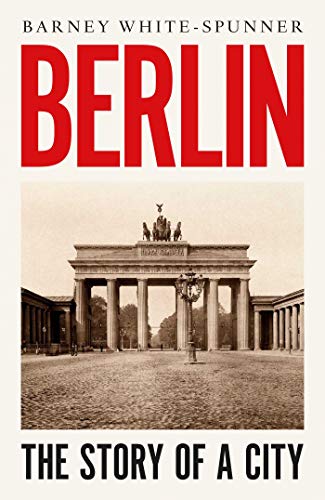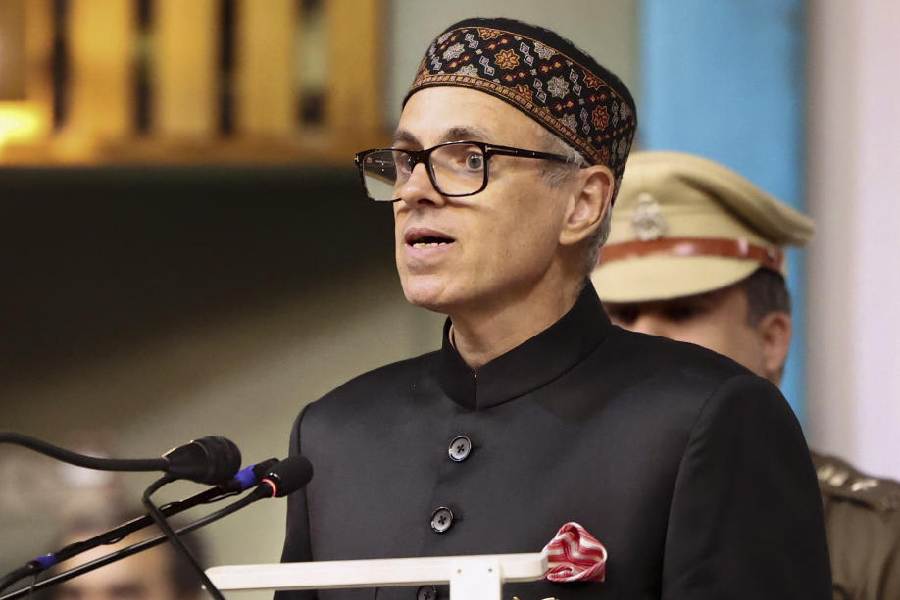Book: Berlin: The Story of a City
Author: Barney White-Spunner
Publisher: Simon & Schuster
Price: Rs 699
“Berlin ‘is home to such an audacious set of men that you have to be a tough customer and a little rough around the edges now and then just to keep your head above water’” — Johann Wolfgang von Goethe, 1823
Berlin can flaunt the sum of all clichés thrown at the world’s greatest cities — fascinating in a hundred diverse ways — and, yet, it rises above them all with something more, something else. This ‘else’ was captured perspicaciously by Goethe in the words that Barney White-Spunner uses to open the prologue to his expansive and immersive tome on the story of this German capital with rich, conflicting histories and a continuing vibrant present.
I have never been to Berlin: it is one of those cities that I wish to not just visit but spend some time in. White-Spunner’s engrossing account of it — highlighting its many contradictions, which make it a living city perhaps like no other in Europe — confirms this intuitive wish manifold. Berlin’s acclaimed allure comes from being a city ‘on the edge’, one that makes no effort to smoothen out its sharp corners and rough textures. Rather, even now, as Goethe had proclaimed two centuries ago, all who encounter the city need to be “a little rough around the edges” themselves. Surely that is a city worth its length and breadth in salt, the one that demands that we be not perfect in order to savour a city that is dynamic and difficult at once.
White-Spunner’s Berlin: The Story of a City is a big book, 448 pages of text in a large paperback, along with almost 20 pages of notes, some maps, five pages offering pointers to further reading and notes on sources, a substantial bibliography and a detailed index. I cite these to impress upon interested readers the serious dedication with which this elaborate tale of one city has been spun; simultaneously it must be said that the language it is told in is as light as the book is a heavyweight. White-Spunner, there can be little doubt, is completely immersed in the city of Berlin — but not in any hagiographic way. He is intrigued by and drawn to the city for its complexities, not its obvious wonders. And the wonder of the book is that it is able to tell a captivating story even while it minutely, analytically, critically traces the historical, cultural and geopolitical emergence of this urban entity from the 13th to the 21st centuries in the course of 12 absorbing chapters.

Berlin: The Story of a City by Barney White-Spunner, Simon & Schuster, Rs 699 Amazon
“There is a particular frisson about Berlin, a combination of excitement, anticipation, nervousness and the unexpected. Through all its life it has been a city of tensions.” These are superb personifications to read a city by. One might have almost hoped that White-Spunner would have used these senses/sensations to headline his chapters rather than the more prosaic dates that he has — except that the dates, beginning with “1237-1500” and ending at “After 1989”, remind us of the grand sweep of history that the city has played an active role in for over seven centuries now. Berliners began to bring down — hammering and chiselling, block by block — the Berlin Wall on November 9, 1989, the date from which their city began to breathe a new existence; it may have seemed to the world that all its history was made up of chunks of time before and after that magnificently dramatic day. White-Spunner takes us by the hand and leads us down the long road of its past to the Middle Ages, and then back all the way again, tracing colours and smells and shouts and whispers almost as if one were present at their ravelling and unravelling.
This long ‘story of a city’ bubbles and brews such that it is overwhelming and impossible to sum up: that would be an injustice. Suffice it to say that it ought to be read by anyone who is drawn to cities with a past and a present that smoulder and sparkle equally. In the frothing and foaming of its sometime grand, sometime painful political history through astonishingly varied times and climes, White-Spunner has carefully, if quixotically, attempted to answer a question often asked: how could a people as cultured, as religious and as civic-minded support first a Kaiser and then the Nazis, and stain forever the lands and waters with such ferocious cruelty?
But what stayed with me most were two other acute observations. The first is that there is no “traditional Berliner”; instead, says White-Spunner, a “typical Berliner” is “someone who comes to Berlin and adopts the casual, slightly grumpy, sharp yet warm, hedonistic and vibrant character that has come from waves of settlers…” and quotes Christopher Stölzl: “Perhaps the absolutely typical Berliner is the one who has just arrived.” The second homes in on a reason for Berlin’s lasting charisma: “its distinctive independence of character” that has the strength to cherish both nourishing and painful memories, not using the past to escape but confronting it and trying to live with it. What is there not to be enchanted by Berlin, then, when it embraces the freshly-arrived as well as its own hoary past, luminous and rusted both?










